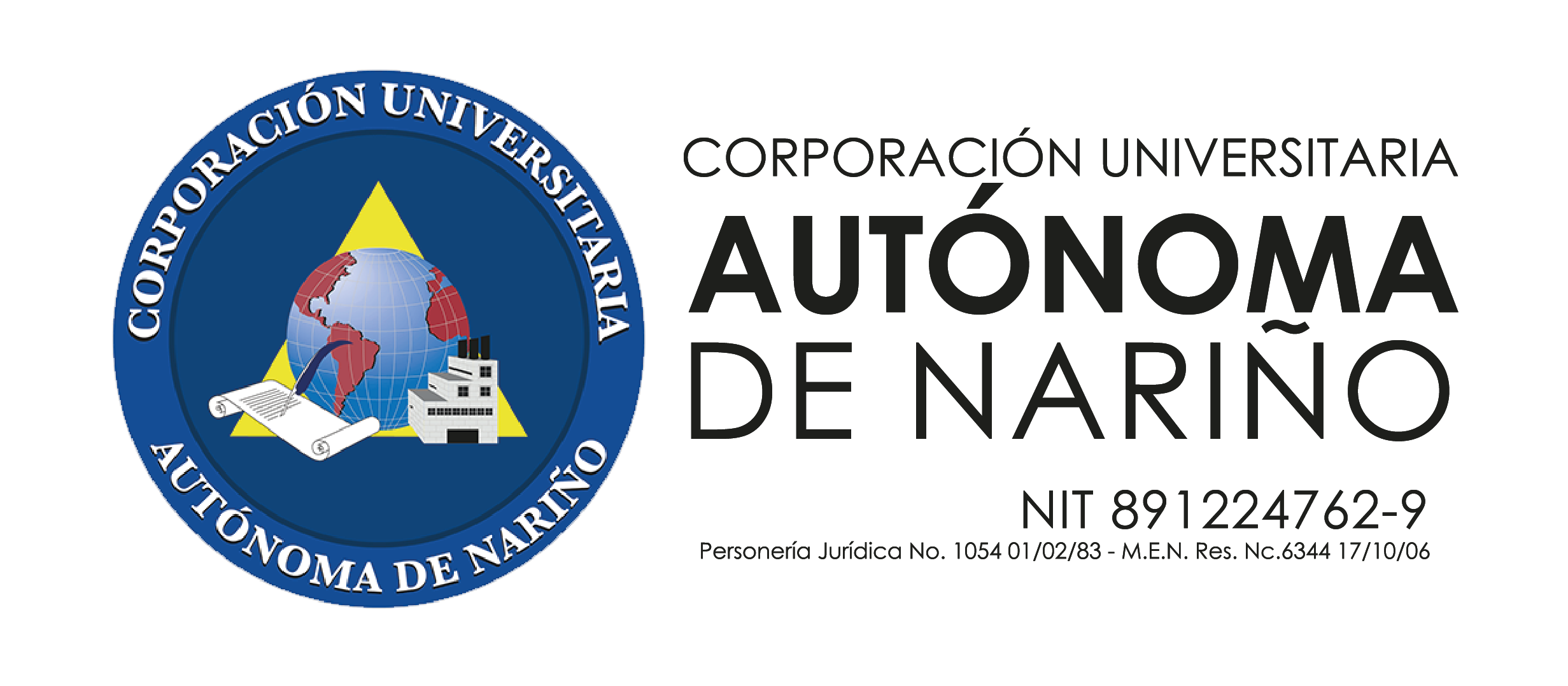Commercial opening, domestic investment and economic growth in Ecuador. Empirical research 1950-2019
DOI:
https://doi.org/10.47666/summa.3.2.29Keywords:
trade openness, foreign trade, economic growth, international economy, national investment, international marketsAbstract
The theory of growth has paid attention to domestic investment and to the commercial opening of economies with the rest of the world as key factors to explain the evolution of growth. The main objective of this work is to analyze the cointegration relationship, the short and long-term dynamics and the causal links between domestic investment, trade openness and economic growth in Ecuador in the 1950-2019 period. The work is explanatory level with empirical research design. An empirical model of growth estimated using the autoregressive distributed lag (ARDL) bounds test approach and the Granger causality test is presented. The results found indicate that there is a long-term cointegration relationship between investment, openness and growth, according to the ARDL bounds test, in Ecuador. Investment and openness have a positive and significant impact on income and growth, in the short and long term. However, the analysis of the Granger causality analysis indicated a unidirectional process that goes from openness towards investment and income, while the hypothesis of non-causality in both directions between investment and growth could not be rejected. It is concluded that, as a consequence, the analysis implies that this economy must continue its efforts to open up to international markets, both via exports and imports.
Downloads
References
Alam, K. y Sumon, K. (2020). Causal relationship between trade openness and economic growth: a panel data analysis of Asian countries. International Journal of Economics and Financial Issues, 10(1), 118-126. https://doi.org/10.32479/ijefi.8657
Al-Tarawneh, A. y Al-Assaf, G. (2014). Trade openness and real investment in Jordan an ARDL bound testing approach. Jordan Journal of Economic Sciences, 1(1), 79-94. https://doi.org/10.32479/ijefi.8657
Anggraini, D.; Riyanto, W. y Suliswanto, M. (2020). Analysis of economic growth in ASEAN countries. Jurnal Ekonomi Pembangunan, 18(1), 80-90. https://doi.org/10.22219/jep.v18i1.12708
Bakari, S. (2018). The impact of domestic investment on economic growth: new policy analysis from Algeria. Bulletin of Economic Theory and Analysis, III(1), 35-51. https://doi.org/10.25229/beta.337367
Bakari, S. y Tiba, S. (2019). The impact of trade openness, foreign direct investment and domestic investment on economic growth: new evidence from Asian developing countries. Munich Personal RePEc Archive, Paper No. 94489, January 2019. Disponible en https://mpra.ub.uni-muenchen.de/94489/
Bal, D.; Dash, D. y Subhasish, B. (2016). The effects of capital formation on economic growth in India: evidence from ARDL-bound testing approach. Global Business Review, 17(6), 1-13. https://doi.org/10.1177/0972150916660403
Bejarano, H.; Molero, L.; Villegas, E.; y Borgucci, E. (2020). Ecuador y la Alianza del Pacifico: Estudio comparativo sobre oportunidades de crecimiento vía sector externo. Revista Venezolana de Gerencia, 25(especial 4), 628-647.
Bulmer-Thomas, V. (2017). La historia económica de América Latina desde la Independencia. México, D.F.: Fondo de Cultura Económica.
Camacho, F. y Bajaña, Y. (2020). Impact of foreign direct investment on economic growth: comparative analysis in Ecuador, Peru and Colombia 1996-2016. International Journal of Economics and Financial Issues, 10(4), 247-257. https://doi.org/10.32479/ijefi.9937
Carvajal, A. y Martin-Mayoral, F. (2021). Precio del petróleo y ciclo económico en una economía dolarizada: Un enfoque de cambio de régimen de Markov aplicado a la economía ecuatoriana. Revista Cuestiones Económicas, 31(1), 5-28. https://doi.org/10.47550/RCE/31.1.1
Dritsaki, C. (2015). Effect of trade openness and foreign direct investment on economic growth: an empirical research of the three Baltic countries. International Research Journal of Finance and Economics, 133, 191-199.
Durán, J. y Álvarez, M. (2008). Indicadores de comercio exterior y política comercial: mediciones de posición y dinamismo comercial. Santiago de Chile: Comisión Económica para América Latina y el Caribe.
Dutta, C.; Haider, M. y Das, D. (2017). Dynamics of economic growth, investment and trade openness: evidence from Bangladesh. South Asian Journal of Macroeconomics and Public Finance, 6(1), 82-104. https://doi.org/104. 10.1177/2277978717695150
Feenstra, R.; Inklaar, R. y Timmer, M. (2015). The next generation of the Penn World Table. American Economic Review, 105(10), 3150-3182. https://doi.org/10.1257/aer.20130954
Franco; H. y Ramírez, A. (2005). El modelo Harrod-Domar: implicaciones teóricas y empíricas. Ecos de Economía, 21, 127-151.
Frankel, J. y Romer, D. (1999). Does trade cause growth? The American Economic Review, 89(3), 379-399.
Freund, C y Bolaky, B. (2008), Trade, regulations, and income. Journal of Development Economics, 87, 309-321.
Galindo, M. y Malgesini, G. (1994). Crecimiento económico: principales teorías desde Keynes. Madrid: Editorial McGraw-Hill.
Gómez, M.; Ciarreta, A. y Zarraga, A. (2018). Consumo de energía, crecimiento económico y comercio: un análisis de causalidad para México. EconoQuantum, 15(1), 53-72.
Gries, T. y Redlin, M. (2020). Trade and economic development: global causality and development- and openness-related heterogeneity. International Economics and Economic Policy, 17, 923-944. https://doi.org/10.1007/s10368-020-00467-1
Grossman, G. y Helpman, E. (1991). Trade, knowledge spillovers, and growth. European Economic Review, 35(2-3), 517-526. https://doi.org/10.1016/0014-2921(91)90153-A
Hye, Q. y Lau, W. (2015). Trade openness and economic growth: empirical evidence from India. Journal of Business Economics and Management, 16(1), 188-205. https://doi.org/10.3846/16111699.2012.720587
Jones, C. (2009). Macroeconomía. Barcelona: Antoni Bosch, editor S.A.
Krueger, A. (1974). The political economy of rent-seeking society. American Economic Review, 64, 291-303.
Lucas, R. (1988). On the mechanics of economic development. Journal of Monetary Economics, 22(1988), 3-42.
Malefane, M. y Odhiambo, N. (2018). Impact of trade openness on economic growth: empirical evidence from South Africa. Unisa Economic Research, Working Paper Series 05/2018.
Maridueña, A. (2017). Efecto de la apertura comercial en el crecimiento económico. La estructura productiva, el empleo, la desigualdad y la pobreza en el Ecuador (1960-2015). Cuestiones Económicas, 27(2), 73-139.
Matuka, A. y Asafo, S.S. (2021). Effects of services on economic growth in Albania: an ARDL approach. The Journal of International Trade & Economic Development, 2021. https://doi.org/10.1080/09638199.2021.1910723.
Molero, L.; Anchundia, J.; Patiño, R. y Escobar, Y. (2020). Crecimiento económico y apertura comercial: Teoría, datos y evidencia (1960-2017). Revista de Ciencias Sociales, XXVI(4), 476-496.
Ortiz, C.; Salinas, A.; Alvarado, R. y Ponce, P. (2019). Inversión extranjera directa y libertad económica como determinantes del crecimiento económico de Ecuador en el corto y largo plazo. Revista Economía y Política, 29, 105-124. https://doi.org/10.25097/rep.n29.2019.06
Palley, T. (2011). The rise and fall of export-led growth. Working Paper, No. 675, Levy Economics Institute of Bard College, Annandale-on-Hudson, NY.
Pesaran, M. y Shin, Y. (1999). An autoregressive distributed lag modelling approach to cointegration analysis. En Strom, S. (ed.): Econometrics and Economic Theory in the 20th Century: The Ragnar Frisch Centennial Symposium. Cambridge University Press.
Pesaran, M.; Shin, Y. y Smith, R. (2001). Bounds testing approaches to the analysis of level relationships. Journal of Applied Econometrics, 16, 289-326. https://doi.org/10.1002/jae.616
Rani, R. y Kumar, N. (2019). On the causal dynamics between economic growth, trade openness and gross capital formation: evidence from BRICS countries. Global Business Review, 20(3), 795-812. https://doi.org/10.1177/0972150919837079
Ray, D. (2002). Economía del desarrollo. Barcelona: Antoni Bosch, editor S.A.
Ridzuan, A.; Khalid, M.; Zarin, N.; Razak, M.; Ridzuan, A.; Ismail, I. y Norizan, N. (2018). The impact of foreign direct investment, domestic investment, trade openness and population on economic growth: evidence from ASEAN-5 countries. International Journal of Academic Research in Business and Social Sciences, 8(1), 128-143. https://doi.org/10.6007/IJARBSS/v8-i1/3799
Sakyi, D. (2011). Trade openness, foreign aid and economic growth in post-liberalisation Ghana: An application of ARDL bounds test. Journal of Economics and International Finance, 3(3), 146-156. https://doi.org/10.5897/JEIF.9000116
Sakyi, D.; Villaverde, J.; Maza, A. y Chittedi, K. (2012). Trade openness, growth and development: evidence from heterogeneous panel cointegration analysis for middle-income countries. Cuadernos de Economía, 31(57), 21-40.
Sakyi, D.; Commodore, R. y Osei, E. (2015). Foreign direct investment, trade openness and economic growth in Ghana: an empirical investigation. Journal of African Business, 16(1-2), 1-15. https://doi.org/10.1080/15228916.2015.1061283
Umer, F. (2014). Impact of trade openness on economic growth of Pakistan: an ARDL approach. Journal of Business & Economic Policy, 1(1), 39-59.
Villegas, E.; Salazar, G.; Fernández, V. y Mendoza, J. (2019). Elasticidades de corto y largo plazo en las importaciones de Ecuador. Revista de Ciencias Sociales, XXV(2), 217-231.
Weil, D. (2006). Crecimiento económico. México, D.F.: Editorial Pearson Educación, S.A.
Yusoff, M. y Febrina, I. (2014). Trade openness, real exchange rate, gross domestic investment and growth in Indonesia. The Journal of Applied Economic Research, 8(1), 1-13. https://doi.org/10.1177/0973801013506398








